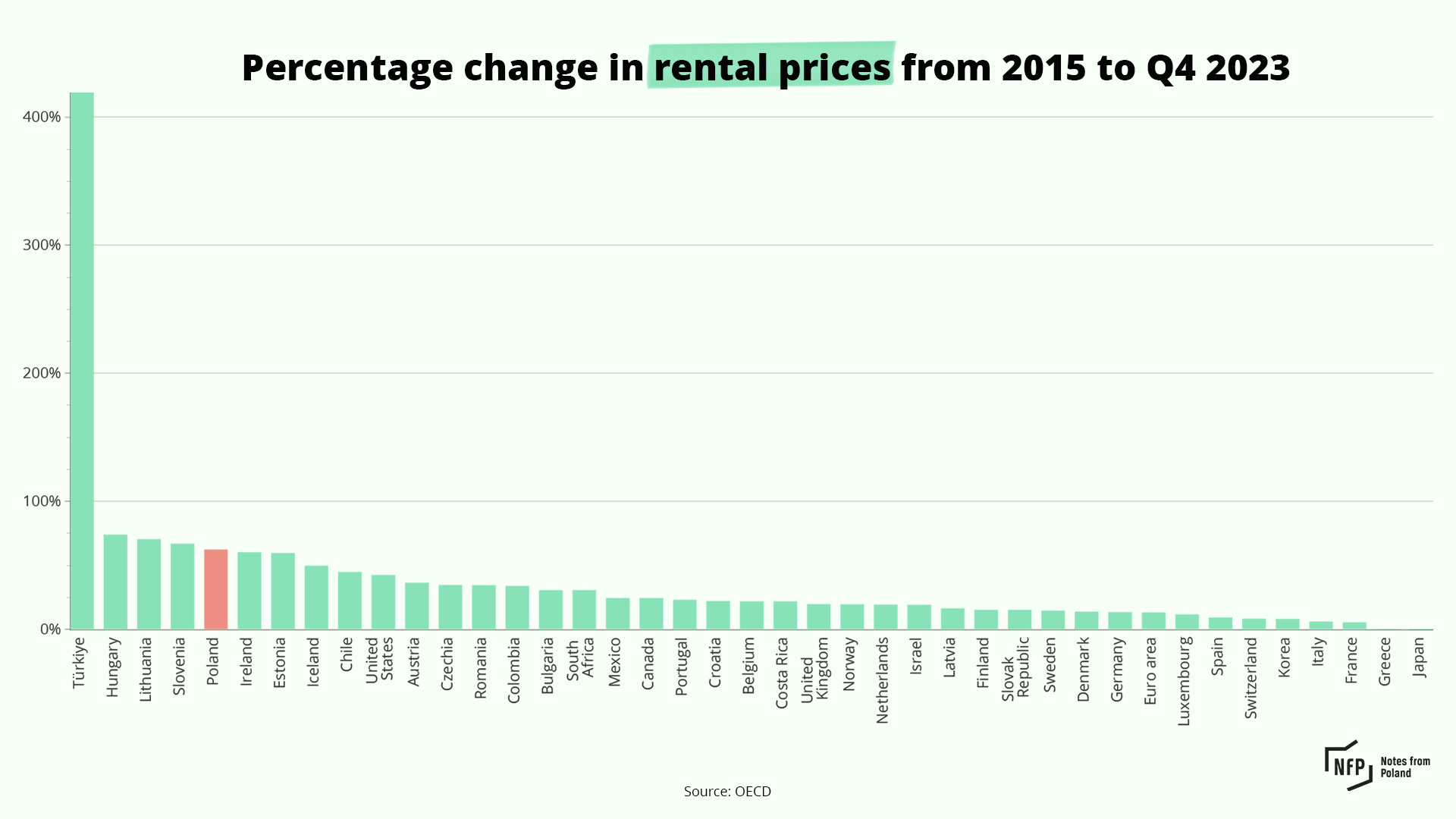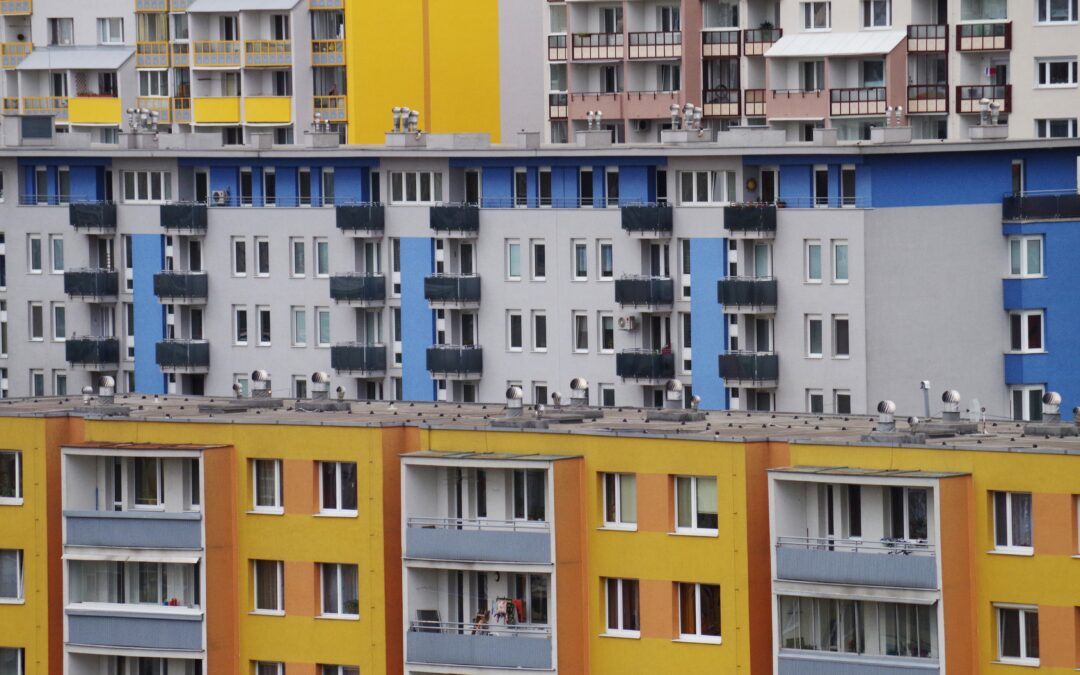The cost of rent in Poland has risen by 62% since 2015, the fifth-fastest growth among 40 countries researched by the Organisation for Economic Co-operation and Development (OECD).
By far the largest rise, of 420%, was recorded in Turkey, which has been struggling with an economic crisis. It was followed by Hungary (74%), Lithuania (70%) and Slovenia (67%), then Poland. Rental prices fell, albeit marginally, in only two countries: Greece (-0.4%) and Japan (-0.6%).

Countries that have received large numbers of refugees from Ukraine, such as Poland, Hungary and Lithuania, saw a particular acceleration in rental prices from early 2022. Several million Ukrainians fleeing the war passed through Poland at that time, with around a million staying longer term.
Between 2015 and 2022, the average wage in Poland also rose by 24.5% in terms of purchasing power parity, which was the sixth-highest rise recorded by the OECD. However, as in other countries, those increases were much lower than the rise in rental prices.
The housing crisis was one of the topics often taken up during this year’s election campaign. It particularly affects young people, around half of whom live with their parents, one of the highest proportions in the EU.
Both the Law and Justice (PiS) party, which lost its parliamentary majority in the October elections after eight years in power, and the Civic Coalition (KO), the largest group in the new ruling coalition that took power last week, proposed mortgage subsidies.
Those solutions were, however, criticised by The Left (Lewica), one of KO’s current coalition partners, which instead advocated the building of low-rent homes to respond to supply shortages.
KO has additionally proposed the introduction of a rental subsidy of 600 zloty.
Prices for both buying and renting in Poland have soared, leaving many struggling to afford housing.
But solutions proposed by the two main parties – to subsidies mortgages – repeat demand-side solutions that have failed in the past, writes @WojciechKosc https://t.co/I0DUlOEn2h
— Notes from Poland 🇵🇱 (@notesfrompoland) March 31, 2023

Notes from Poland is run by a small editorial team and published by an independent, non-profit foundation that is funded through donations from our readers. We cannot do what we do without your support.

Alicja Ptak is senior editor at Notes from Poland and a multimedia journalist. She previously worked for Reuters.



















